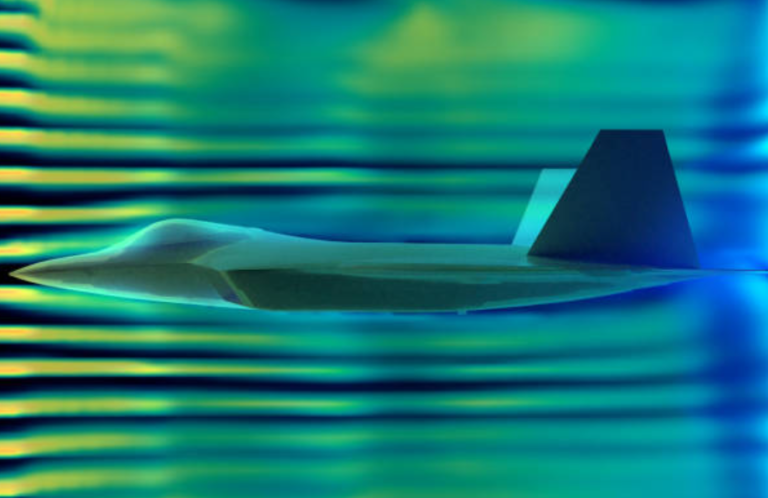Understanding Car Wind Noise
Car wind noise can be heard inside of your vehicle while driving on the highway and is the audible result of high-pressure air attempting to escape as you accelerate. This whooshing sound, high-pitched, enters through the smallest gaps or openings in the vehicle’s exterior.
In automotive design, as with other design fields, variations and uncertainties in operational conditions and system properties lead to performance variations. During the automotive manufacturing process quality issues can easily arise leading to unintended consequences. Quality problems can be influenced by a multitude of various such as loads, materials, and manufacturing processes.

The root cause of a car wind noise problem can vary. However one of the most common is due to uneven/ large gaps between the door, hoods, lift gates/ trunks, and the car body along the seal line. This is a vehicle quality issue, as wind noise can occur if there is a gap or disturbance at any point along the seal line. Poorly designed outside rearview mirrors (OSRVM), roof racks, or door handles can also be a culprit when trying to find the source of car wind noise, however, this would be an example of a design issue.
The Problem with Sound Pollution
Urban areas offer abundant economic opportunities and bustling business activities. However, the growth of transportation and industry in cities has led to elevated noise levels, causing citizens to suffer from noise pollution. On top of being super annoying, sound pollution can lead to a range of issues, from interference with communication and sleep disturbances to hearing loss and mental health problems. It can also affect memory and raise blood pressure in sensitive individuals.

Automobiles are a significant source of noise pollution, affecting both vehicle occupants and pedestrians. The sound pressure levels (SPL) of 80 dB and above are considered unpleasant and can cause harm if exposed to for long periods. Vehicles typically generate around 70 dB of noise at city speeds, but this can increase to 100 dB at highway speeds. Therefore, reducing the noise generated by vehicles is crucial. Some ways to reduce the aerodynamic noise of a vehicle can be achieved by altering the exterior shape, improving aeroacoustics, and possibly redesigning the aerodynamics of vehicles. Having a quiet vehicle is essential for the comfort of vehicle occupants and the well-being of pedestrians.
How Wind Noise is affected by Automotive Aerodynamics
Car wind noise is a key element of aerodynamic noise, impacting a car’s performance and comfort. It’s generated by the airflow around the vehicle, particularly in areas like the OSRVM, A-pillars, and rear edges. By reducing external aerodynamic noise, vehicles can offer a quieter, more comfortable driving experience, reducing driver fatigue.

Aerodynamic noise in vehicles can originate from various sources, including ventilation flows through the cabin and the external flow around the vehicle. Ventilation flows can create noise as air moves through vents, ducts, and openings within the vehicle’s interior.

External flow around the vehicle, especially at high speeds, can also generate noise as air interacts with features such as OSRVM, door handles, and other protrusions. Managing these sources of aerodynamic noise is crucial for improving overall vehicle comfort and reducing driver fatigue.
Sources of aerodynamic noise:
Turbulent airflow causes the noise to reach occupants’ ears, with several key principles governing wind noise generation. While there are five ways in which external car wind noise is produced and transmitted in vehicles, we’ll focus on four:
- Pressure Fluctuation on Side Glass: Turbulent airflow outside the vehicle creates a fluctuating surface pressure field on the side glass, comprising of convective and acoustic components.
- Pressure Fluctuation at the Mirror: The front of the side mirror experiences high pressure due to steady airflow, contrasting with the rear, where airflow is turbulent. Turbulence at the mirror’s rear creates acoustic waves that propagate towards the side glass and may be transmitted inside the vehicle to the driver’s ear.
- Pressure Fluctuation on the A-pillar: Similar to the mirror, the A-pillar generates acoustic waves that travel to the side glass and are transmitted to the driver’s ear inside the vehicle.
- Acoustic Sources within Eddies: Eddies within turbulent flow can also produce noise, acting as quadrupole acoustic sources near the side glass. However, their contribution is considered negligible at typical automobile speeds.
The Effects of car wind noise and aerodynamic drag:
The effects of wind noise and aerodynamic drag are closely intertwined. Drag reduction can have a beneficial effect on car wind noise, as features or shapes on a vehicle that contribute to drag creation often also increase wind noise inside the vehicle. Aerodynamic noise tends to arise where the airflow separates from the vehicle surface. This separation is most likely to occur around sharp corners, such as those found at the rear face of each side mirror and around the A-pillar.
Minimizing these areas of flow separation can help reduce aerodynamic noise and improve overall vehicle comfort. Car wind noise is challenging to predict using computational fluid dynamics alone, so engineers often rely on physical testing in a wind tunnel to reduce external car wind noise effectively.
What is the meaning of Aeroacoustics?
Aeroacoustics is a field of acoustics focused on understanding how noise is produced by turbulent fluid motion or aerodynamic forces interacting with surfaces. This branch of study plays a crucial role in designing automobiles, aircraft, wind turbines, buildings, and bridges to reduce vibrations and noise. When discussing aeroacoustics, it’s essential to consider two main sources of noise: external noise and aerodynamic noise (or pseudo-noise).
Why is Aeroacoustics important in the automotive field?
Aeroacoustics is an important subject because it focuses on reducing noise pollution inside and outside of a vehicle. Aeroacoustics is the examination of the acoustics produced when air interacts with an object. For example, when laminar airflow strikes an object, it becomes turbulent, forming vortices of air. These vortices create fluctuating pressure areas that cause nearby objects to vibrate, thus generating noise. Additionally, noise is produced by the airflow vortices themselves and can be transmitted through various paths or regions of a structure, such as leaks in seals and openings.

How to Minimize Car Wind Noise
While vehicles are equipped with sound absorption materials to reduce interior noise, these materials can only address a limited range of frequencies or amplitudes. Moreover, they are heavy, making them challenging to incorporate freely without significantly increasing vehicle mass.

The primary sources of noise that drivers hear are the A-pillar and side mirrors, which are closest to the driver. The turbulent wake structure generated by these components creates fluctuating pressure zones that vibrate the surrounding structure (such as vehicle windows), producing noise near the driver’s ears. This noise can significantly impact the quality and comfort of the ride. Although wheels generate high levels of noise, most vehicle designs position them far enough from passengers to mitigate their effects.
Identify the Source:
First and foremost, pinpointing the source is crucial for reducing wind noise. Drive in a quiet or secluded area with no music to better hear the noise’s origin. For a more precise assessment, have someone accompany you to help locate the noise source. Pay close attention to all doors, windows, and the car’s exterior. Door and window seals are often significant contributors to wind noise. Once you’ve identified the source, thoroughly inspect the area to check if other parts are also causing similar noise.
Repair Door Seals:
Weatherstripping seals around doors and windows prevent air from entering, making them a likely cause of wind noise. If you’ve confirmed the noise source, inspect the weatherstripping. Open each door and window and examine the seals all around. Look for any damage, such as being crushed, torn, or flattened, then reattach if necessary. Also, check around all of the front/ side and rear closures of the vehicle (hood, doors, trunk, lift gate).
Vehicle Closures (all doors):
Now that we’ve inspected the weatherstripping and everything seems fine, let’s examine the car doors. Even minor damage can prevent proper closure or create uneven gaps where air can enter your vehicle. Start by looking for any significant damage like deep scratches. If you notice any damage, consider taking your vehicle to get repairs.
Repair the Damage:
Any exterior damage to your vehicle is important to address, as wind can find its way inside. Examine the entire exterior for any visible damage that may create openings. Look for uneven gaps in the exterior caused by accidents, undesired manufacturing variation in your vehicle body, or missing/damaged seals. also, check for signs of rust or corrosion, even if they’re small. Any openings in your car’s exterior could be contributing to car wind noise.
Repair any damaged glass
Finally, thoroughly inspect the glass in your car. Cracks in the windows or windshield can increase wind noise. Chips and cracks can usually be repaired by a professional at a reasonable cost. If the damage is more severe, you may need to replace the glass entirely.
Conclusion
In conclusion, car wind noise is a significant issue in the automotive industry, affecting the comfort and quality of vehicles. This noise is caused by various factors, including turbulent airflow around the vehicle, gaps between the doors and body, and the design of side mirrors and A-pillars. By understanding the sources and characteristics of wind noise, automotive engineers can develop innovative solutions to enhance the driving experience and reduce noise pollution for vehicle occupants.





